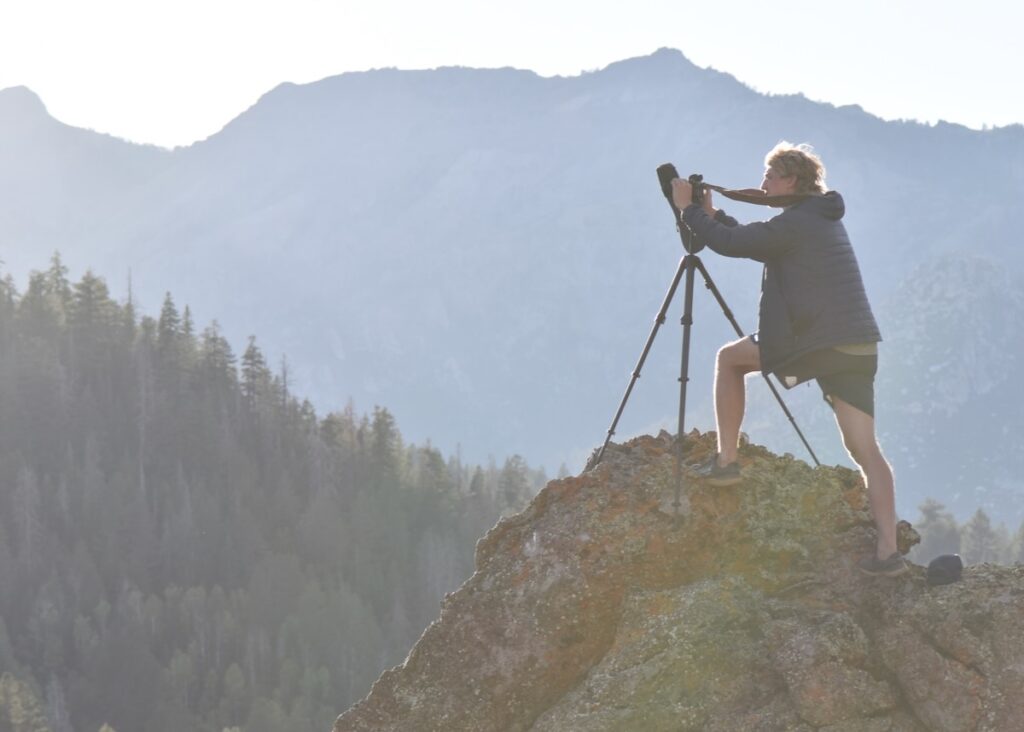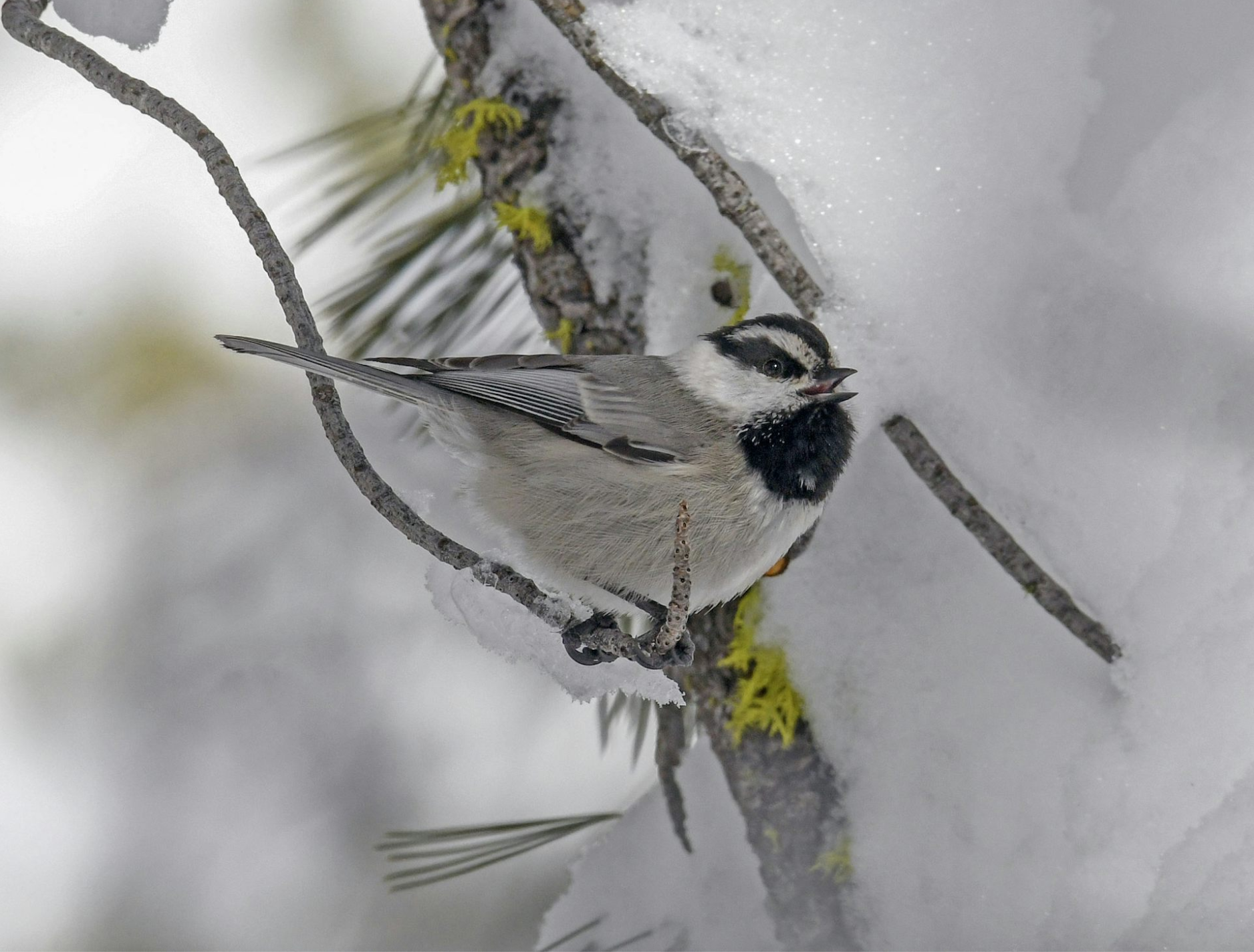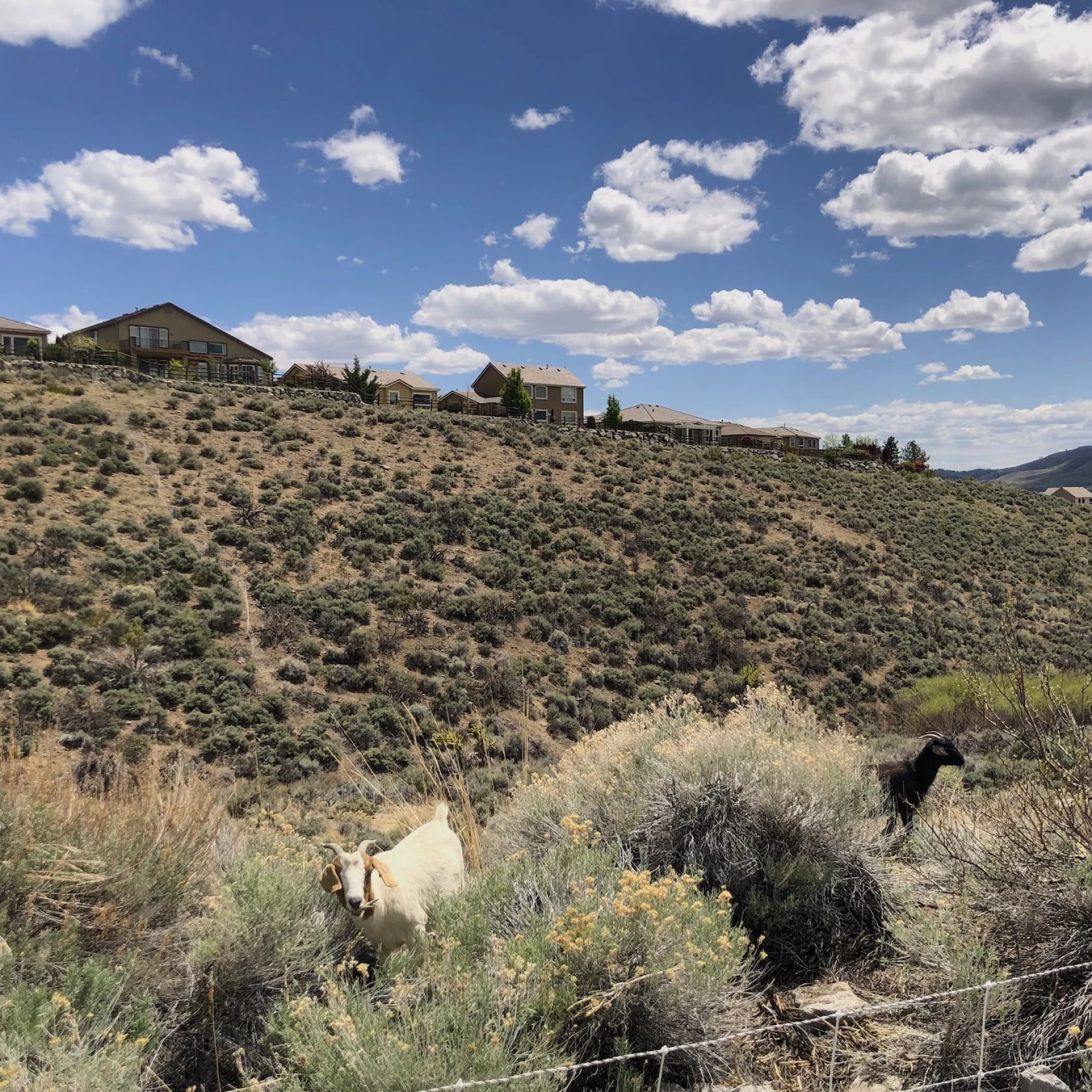A conversation on the essential role of humor in communicating science to the public
Have you ever wondered what it is like to do social media on behalf of a short-eared owl? How about a wizard lizard? Government-led social media accounts are not typically known for their witty content, but with a following of more than 827,000 on Facebook and 734,000 on Instagram, the U.S. Fish and Wildlife Service has found the sweet spot between educating their audiences and keeping them laughing. Instagram reels that follow music trends, memes, personification of animals, and beautiful visuals are other examples of the content that the USFWS has been developing for its accounts.
To learn more about the strategy behind the USFWS’s engaging approach to science communication, the Hitchcock Project talked with Nathan Hurner, Public Affairs Specialist for the USFWS’s Reno Fish and Wildlife Office, who contributes content to USFWS social media platforms. Hurner recognizes that, in an era where public engagement is crucial to conservation efforts, diverse communication strategies are needed to connect with audiences nationwide. In this conversation with the Hitchcock Project, Hurner shares insights on the strategies he uses in his work to find a balance between engaging the public and maintaining scientific accuracy.
HP: We understand that you work as a public affairs specialist for the USFWS. Can you tell us what a typical day is like in your role?
Hurner: Day-to-day it changes a lot, because we have different projects going on. Today, I have been working on video editing. Yesterday I was doing campaign planning. There are different layers to the communication work that I do. Social media posts are shorter and more current, while longer campaigns require more development. My week or day-to-day may be a mix between a social media post one day to working on larger campaigns on another day. It changes a lot depending on the needs of the week and my capacity for a day.
I work closely with my supervisor to develop ideas. We have a two-person team in the Reno office, so we collaborate a lot. Either I am approaching my supervisor with ideas, or she is coming to me, and we get our ideas from talking with people in our office, including biologists and partners. We are in constant communication with our subject matter experts who are doing work with landowners, for example.
HP: You mentioned working on campaigns. Can you give an example of what a campaign looks like?
Hurner: Last year, we had an “ESA at 50” campaign celebrating 50 years of the Endangered Species Act. In that campaign, which was a national one, we provided supporting materials. Locally, we have our own campaigns, like one addressing the challenge of communicating about our work in Nevada. A lot of our species are endemic; they are restricted to small areas and places that people will never visit. So, we have a video series that we are creating supporting material for, and we are going to roll that out as outreach products to highlight the species that exist in Nevada that people have never heard about.
HP: How is your social media planning strategy different when communicating with a local vs national audience?
Hurner: We work on local stories but determine whether they should be shared locally, regionally, or nationally. That is done by figuring out who our audiences are at a time. Social media posts target a national audience, while stories related to our office may vary. Locally, we consider who our partners in the project are and the information we want to share, it becomes targeted information, while regionally, it might be a personal interest story or a project with broader appeal. Nationally, we highlight our office’s work in a way that fits our strategy of being relatable and authentic.
So, working on a video about Sierra Nevada bighorn sheep, for example, may have more regional interest because Sierra Nevada mountains are popular around California and Nevada but may not have that national interest. The national strategy is about being authentic and making science approachable. So, we also adapt some of our local stories to try and fit that national strategy.
HP: Tell us about your creative process. Where do you find inspiration, especially in communicating science or animal-related topics?
Hurner: I believe there is a human element to every subject, so I try to capture that in our communication. It is about experimentation, trying out new ideas, and refining them based on what works well. There are different creative processes. It involves taking influences from other sources, things that have worked well in other areas, and adapting them for our office. When I think of good journalism, I think of Anthony Bourdain’s Parts Unknown and his whole documentary series. I think he did a great job of connecting with people with food. That style and approach of travel video series influenced the way I approach journalism and think about it. So, it is really like pulling in different creative influences and seeing how we can adapt those to how we communicate. Because something that works well over there may not work here, but we can try it and see what does well. It is a lot of experimentation.
HP: Do you get resistance from scientists when trying experimental approaches, or are they open to trying different things?
Hurner: I would say it is a combination. The biggest hurdle is approaching biologists with an idea that is not fully formed. I must communicate those ideas clearly and paint a picture. In the world of science versus the world of creativity, there is a gap. You can have an idea of how everything comes together, but it is very abstract. And when you work with people who work in a world that is a lot more concrete, they want an idea of what you are going to produce. So, collaborating and communicating clearly about what that product is, what its goal is and who the audience is, are key. I am in constant communication with the biologists while I am developing the product, and making sure the information is correct and accurate. The work we do is very detail-oriented, so you need to get the details right, but the details do not always translate to an interesting product. It is about constant communication until you find the sweet spot.
It’s also about being open to biologists wanting to change the product, because a lot of people can get stuck or very attached to their creative ideas, but if you can let go of that attachment and let other people have their input, you might end up making a product that’s going to serve you better in the long run. It is also important to have fun with it. That is an important part of the process, making the environment fun for the biologists to work with. They are very passionate about the world of conservation and the work they do, so creating a fun space to work with them helps them get excited to work with you.
HP: Based on that experimentation that you mentioned before, what types of content do you find work best for both audiences and scientists?
Hurner: Video works phenomenally. Short attention-grabbing videos, and then from there you can educate people. Social media has kind of ruined people’s attention spans a little bit. If you have some striking visual or information and you get people hooked, then in the caption or in some other way, you can communicate the information. Videos work well for gaining attention, but I think there is still a lot of value in writing stories.
I can’t say one single thing works best because it is like a funnel. At the top of the funnel, you have social media to gain attention and get people to listen to you. As you go down the funnel, you provide more and more information with more in-depth pieces. Different pieces of content serve different purposes. From a metric standpoint, video is the best, but from a less tangible standpoint and in educating people, which is much harder to measure, you still need those longer journalistic pieces. Even podcasts work well too. I think podcasts work best for that in-depth piece of information, but you will probably have a much smaller audience than on Instagram.
HP: Which types of content do you enjoy creating the most?
The product I have the most fun creating is videos. It is not just editing the videos but collecting all the pieces of the videos. It is like someone tells you to build a puzzle, but you get to make the puzzle pieces. When you are out taking the videos and doing the interviews, you are collecting all these puzzle pieces. At the end, you have to see how they fit together. Some do not fit, some you have to toss out, but once it all comes together and is cohesive, that whole process is a lot of fun.
HP: What are your thoughts on the use of humor in science communication?
Hurner: I think having humor involved with science is essential when it comes to talking to the public. It might sound dramatic, but I believe it is crucial. If you are trying to make science more personable and relatable, humor is a great common denominator for people to share a laugh and be receptive to your message.
There is a balance, though. I see some influencers who lean too heavily on the comedy side, and sometimes the information is not accurate. But at least people are listening, and that is important. Humor can start the conversation and gain people’s attention, whereas if you go straight into it with a PowerPoint and try to educate them right from the start, many people might not be as receptive.
People are receptive to humor and then become more willing to listen to what you have to say. So, I think it is essential for starting the conversation. It also helps build community. When people get more educated on a subject, there is almost an inside joke that requires knowing the science or information behind it to understand. You are laughing with your group that understands it. Humor helps build a community, which is otherwise hard to do.
HP: You mentioned earlier that the Fish and Wildlife Service has a national strategy to be relatable, authentic, and approachable. How does that trickle down into various offices across the country? What kind of culture supports that?
I can only speak for our region, not other regions. Our region has great leadership that emphasizes the human side of things. It is not necessarily just following the national digital strategy but understanding the work. It is about the people who do the work, the places we want to protect, and the species we aim to conserve. When you focus on these three things, the messages naturally become more personable and authentic. Our leadership encourages us to be more relatable to the public, diving deeper into the stories we tell.
For example, one of my peers wrote about a convict who now works in conservation. It is a great personal interest story about a person’s connection to work. Making subjects approachable is important because it benefits everyone to conserve and protect the land and species. We aim to get this message across in a way that is personable and inviting. Science can be intimidating, especially with looming threats reported in the media. By making it more personal and approachable, we invite people in and educate them about public lands and species, which has numerous benefits.
HP: Has there been any pushback regarding content that went too far in a humorous direction, or posts that turned out to be offensive?
I have seen some instances. There was one post that offended people, which seemed to be a generational disconnect in humor—one generation found it dry and sarcastic, while the other did not. This highlights the challenge of creating messages that translate across different demographics. I have also seen some pushback from biologists. It is important to be open to feedback, even if it means changing or scrapping ideas. If a biologist feels that the message does not convey what they want, their input should take priority since they are the subject matter experts.
HP: What do you like best about your job?
I really love the collaboration between me, my supervisor, and the staff. I enjoy problem-solving and finding the best ways to communicate with people. Being able to experiment and try different things to see where communications fits into the world of science and how it can aid science is my favorite part. It is like solving a Rubik’s cube, bridging the gap between communications and science to support our office’s work. I really enjoy doing that.

Vanesa de la Cruz Pavas, M.A., is a reporter and science communication specialist for the Hitchcock Project. She is a graduate of the Reynolds School of Journalism’s class of 2023.






